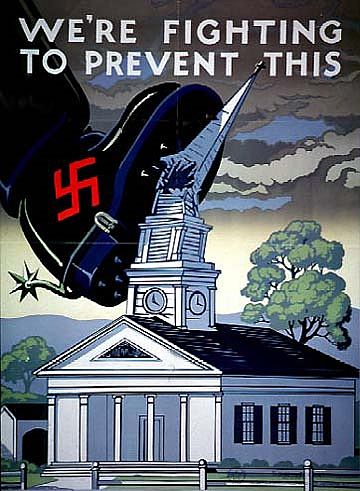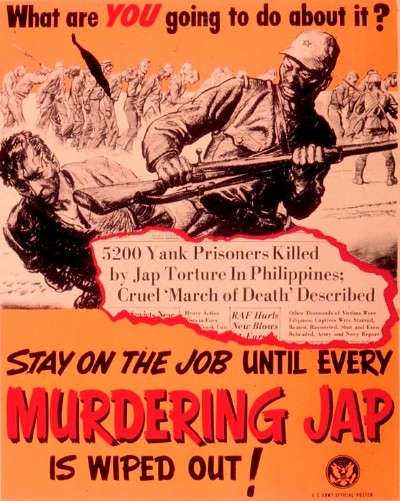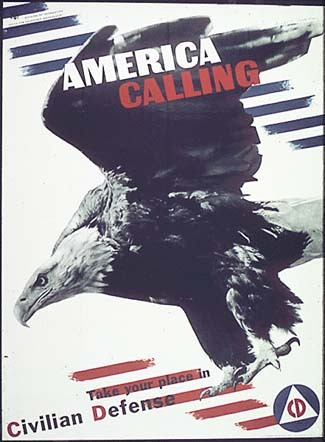


Introduction
Propaganda was used during the war to sway American opinion against the Germans and the Japanese as much as it was devoted to bolster American nationalistic sentiment. Propaganda is essentially the use of messages to manipulate the beliefs and opinions of the audience. A number of studies have been conducted looking into the ‘evil’ and ‘shameful’ use of propaganda evidenced by Hitler in order to gain and maintain support for his Nazi movement, but other countries engaged in these same techniques during the war. In the following three posters, created and used in America, it can be seen that imagery, text and use of color was specifically designed to manipulate public feeling and opinion.
Main body
The anti-German poster features the image of a giant Nazi boot in the process of stepping on a white church with steeple. The boot is identifiable by the dangerous red swastika blazoned to the ankle. It’s made immediately dangerous and cruel by the sharp barbs on the spur and it seems impending by its giant size and its ability to already be stepping on the church. The imagery of the boot stepping on the American church is not just a threat to the religious ideals of the country but a threat to freedom itself as the church often doubled as the government meeting hall.
This danger to the American way of life is reinforced with the slogan on the poster which announces “We’re fighting to prevent this”, suggesting that without full-hearted resistance, this type of scene is inevitable. The colors used are either grey or greyed out, suggesting a world in which all variety and color has been leached out of existence. The poster is intended to convey a sense of immediate Nazi threat, oppression and hopelessness should one not obey the title and resist.
The anti-Japanese poster is even more explicit in its message. The imagery includes the hopeless march of a long line of ragged prisoners as backdrop to the image of a ragged and starved-looking white man with his hands apparently tied behind his back reacting to the blow he’s just received from the butt of a rifle held by a sneering Japanese soldier in hard-hat and uniform. A newspaper clipping seems burned onto the surface highlighting the headline. The headline contributes to the text of the poster.
It reads, “5200 Yank Prisoners Killed by Jap Torture in Phillipines: Cruel ‘March of Death’ Described.” The larger text of the poster at the top reads, “What are you going to do about it?”, insisting upon personal involvement while the text at the bottom encourages long-term support by insisting that the country “Stay on the job until every murdering jap is wiped out!” These messages are delivered in highly alarming oranges, reds and blacks that heighten the emotional response through its very warm palette.
The pro-American poster is also guilty of using propaganda techniques in its presentation through its imagery, text and colors. The imagery makes blatant appeals to the national symbol of strength in the form of the bald eagle as it poises to strike. The impression of movement is reinforced by the slightly diagonal stripes seen behind the eagle. The top stripes are predominantly blue while the bottom stripes are red, introducing the red, white and blue of the American flag. The text of the poster announces “America Calling” prompting an almost automatic response to answer. This text is followed by the catchy slogan, “Take your place in Civilian Defense”, with its repeating /s/ sounds that initiate an urge toward movement and involvement.
Conclusion
It’s easy enough to point fingers and claim propaganda, but much of the literature we see today could fall within the definition of this technique. Nothing more than an appeal to sway opinion through hard-hitting imagery and emotional appeals, America was equally as guilty of using propaganda on its citizens in seeking support for the war effort and in encouraging nationalistic bias.
References
Anti-German poster. Web.
Anti-Japanese poster. Web.
Pro-American poster. Web.